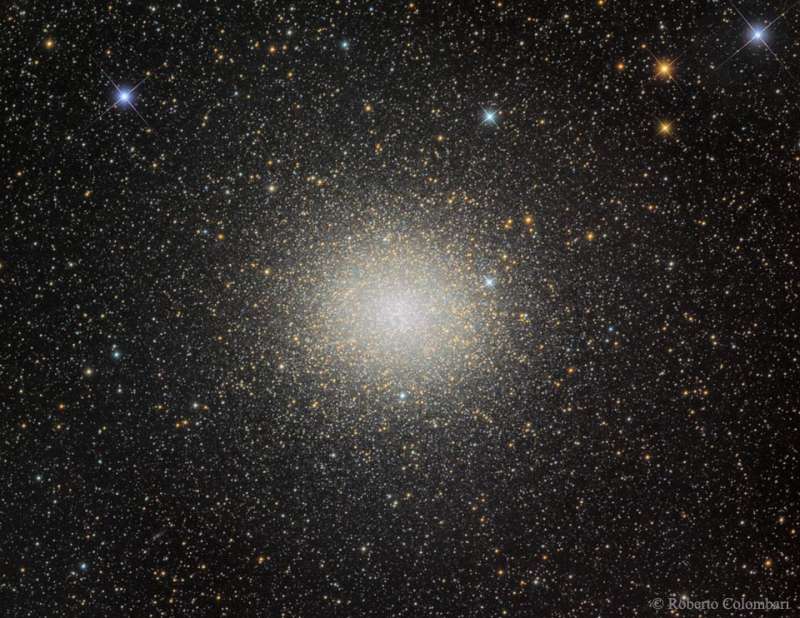Credit & Copyright: Roberto Colombari
Explanation:
This huge ball of stars predates our Sun.
Long before humankind evolved, before
dinosaurs roamed,
and even before our Earth existed, ancient globs of
stars condensed and orbited a young
Milky Way Galaxy.
Of the
200 or so
globular clusters that survive today,
Omega Centauri is the largest, containing over ten million stars.
Omega Centauri
is also the
brightest globular cluster, at
apparent
visual magnitude 3.9 it is
visible to
southern observers with the
unaided
eye.
Cataloged as NGC 5139,
Omega Centauri is about 18,000
light-years away and 150
light-years in diameter.
Unlike many other
globular clusters,
the stars in
Omega Centauri
show several different ages and trace chemical abundances,
indicating that the globular
star cluster
has a complex history over its 12 billion year age.
1999 2000 2001 2002 2003 2004 2005 2006 2007 2008 2009 2010 2011 2012 2013 2014 2015 2016 2017 2018 2019 2020 2021 2022 2023 2024 2025 |
Yanvar' Fevral' Mart Aprel' Mai Iyun' Iyul' Avgust Sentyabr' Oktyabr' Noyabr' Dekabr' |
NASA Web Site Statements, Warnings, and Disclaimers
NASA Official: Jay Norris. Specific rights apply.
A service of: LHEA at NASA / GSFC
& Michigan Tech. U.
|
Publikacii s klyuchevymi slovami:
Omega Centauri - globular cluster - Omega Centavra - Sharovoe skoplenie
Publikacii so slovami: Omega Centauri - globular cluster - Omega Centavra - Sharovoe skoplenie | |
Sm. takzhe:
Vse publikacii na tu zhe temu >> | |
